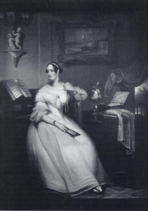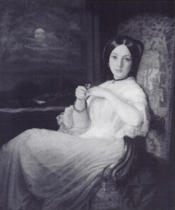Charles Elliot facts for kids
Quick facts for kids
Admiral
Sir Charles Elliot
|
|
|---|---|
 |
|
| Chief Superintendent of British Trade in China | |
| In office 14 December 1836 – 12 August 1841 |
|
| Preceded by | Sir George Robinson |
| Succeeded by | Sir Henry Pottinger |
| Administrator of Hong Kong | |
| In office 26 January 1841 – 12 August 1841 |
|
| Monarch | Victoria |
| Preceded by | Office established |
| Succeeded by | Alexander Johnston (Acting) |
| Governor of Bermuda | |
| In office 25 December 1846 – 13 February 1854 |
|
| Preceded by | Sir William Reid |
| Succeeded by | Freeman Murray |
| Governor of Trinidad | |
| In office 10 March 1854 – 27 October 1856 |
|
| Preceded by | George Harris |
| Succeeded by | Robert Keate |
| Governor of Saint Helena | |
| In office 3 July 1863 – 29 January 1870 |
|
| Preceded by | Sir Edward Hay |
| Succeeded by | Charles Patey |
| Personal details | |
| Born | 15 August 1801 Dresden, Saxony, Holy Roman Empire |
| Died | 9 September 1875 (aged 74) Exmouth, Devon, England, United Kingdom |
| Resting place | St John in the Wilderness, Exmouth, England |
| Spouse | Clara Windsor |
| Children | 5 |
| Parents | Hugh Elliot Margaret Jones |
Admiral Sir Charles Elliot (1801–1875) was an important British officer. He worked in the Royal Navy, as a diplomat, and as a colonial administrator. He is best known for being the first Administrator of Hong Kong in 1841. At that time, he was also the Chief Superintendent of British Trade in China. He played a key role in making Hong Kong a British colony.
Charles Elliot was born in Dresden, Saxony, on August 15, 1801. He joined the Royal Navy in 1815. The next year, he served as a midshipman in the bombardment of Algiers. This battle was against Barbary pirates. After serving in the East Indies Station for four years, he joined the Home Station in 1820. He became a lieutenant in 1822 and a captain in 1828. He met Clara Windsor in Haiti and they married in 1828.
After leaving active naval service, Elliot began a career in the Foreign Office. From 1830 to 1833, he worked as the Protector of Slaves in Guiana. In 1834, he went to China. He became the Chief Superintendent of British Trade from 1836 to 1841. Later, he served as chargé d'affaires and consul general in the Republic of Texas from 1842 to 1846. He was also the Governor of Bermuda (1846–54), Governor of Trinidad (1854–56), and Governor of Saint Helena (1863–70). He was honored as a Knight Commander of the Order of the Bath in 1856.
Contents
Charles Elliot was born in Dresden, Saxony, on August 15, 1801. His parents were Margaret and Hugh Elliot. He was one of nine children. His uncle was the Scottish diplomat Gilbert Elliott, 1st Earl of Minto. Charles went to school at Reading School in Reading, England.
On March 26, 1815, Elliot joined the Royal Navy. He started as a volunteer on HMS Leviathan. This ship served in the Mediterranean Sea. In July 1816, he became a midshipman on HMS Minden. He served in the bombardment of Algiers in August 1816. This battle was against Barbary pirates. He then spent four years in the East Indies Station. In 1820, he joined the cutter Starling and later HMS Queen Charlotte.
In 1821, Elliot joined HMS Iphigenia in the West Africa Squadron. On June 11, 1822, he became a lieutenant. He served on several ships, including HMS Hussar in the West Indies. He was promoted to captain on August 28, 1828.
Working Against Slavery
After his active naval service, Elliot began working for the Foreign Office. In 1830, he was sent to Demerara in British Guiana. His job was to be the Protector of Slaves. He was also a member of the Court of Policy from 1830 to 1833. He later returned to England to help the government with issues related to the Slavery Abolition Act 1833. This law ended slavery in most of the British Empire.
A Key Role in China
In late 1833, Elliot was appointed as Master Attendant for Lord Napier. Lord Napier was the Chief Superintendent of British Trade in China. Elliot's job involved British ships and crews working between Macao and Canton. He was promoted several times, becoming the Chief Superintendent in 1836. He continued to use this title in his official letters. Elliot strongly disliked the trade of certain goods in China. He wrote that he had "a deeper detestation of the disgrace and sin of this forced traffic on the coast of China."
During the First Opium War, Elliot was on board the steamer Nemesis during many battles. In January 1841, he made an agreement with Chinese Imperial Commissioner Qishan. This agreement was called the Convention of Chuenpi. Through this agreement, Elliot announced that Hong Kong Island would become part of the United Kingdom. However, the British Foreign Secretary, Lord Palmerston, was not happy with Elliot's actions. Palmerston felt Elliot had not followed his instructions. So, Elliot was dismissed and replaced by Henry Pottinger in May 1841.
On July 29, HMS Phlegeton arrived in Hong Kong with the news. Pottinger arrived in Macao on August 10. He announced that Elliot's arrangements for Hong Kong would remain in place. On August 24, Elliot left Macao with his family to return to England. As he left, a Portuguese fort fired a 13-gun salute in his honor. Historian George Endacott noted that Elliot's approach of trying to find peaceful solutions was not popular with everyone.
Governor of British Colonies
On August 23, 1842, Elliot arrived in the Republic of Texas. He served there as chargé d'affaires and consul general until 1846. He worked to end slavery, promote free trade, and achieve a peace treaty between Texas and Mexico. He also tried to prevent Texas from joining the United States. This was because an independent Texas would benefit the United Kingdom. However, Texans voted to join the United States, and Elliot was called back to England.
Elliot then served as Governor of Bermuda from 1846 to 1854. He supported a system for prisoners called the mark system. He later became Governor of Trinidad from 1854 to 1856. His last role as governor was in Saint Helena from 1863 to 1870. In St. Helena, Elliot supported a plan to grow the Cinchona plant. This plant is used to make medicine.
Elliot continued to be promoted in the Royal Navy's retired list. He became a rear-admiral in 1855, a vice-admiral in 1862, and an admiral in 1865. He was made a Knight Commander of the Most Honourable Order of the Bath in 1856. Sir Charles Elliot died in Exmouth, England, on September 9, 1875. He is buried in the churchyard of St John in the Wilderness, Exmouth.
Family Life
While serving in the West Indies, Elliot met Clara Genevieve Windsor (1806–1885) in Haiti. They married in 1828. They had five children: two daughters and three sons.
- Harriet Agnes Elliot (1829–1896) married Edward Russell, 23rd Baron de Clifford. They had four children.
- Hugh Hislop Elliot (1831–1861) was a Captain in the 1st Bombay Light Cavalry. He died at sea.
- Gilbert Wray Elliot (1833–1910) worked in the Bombay Civil Service. He had one child from each of his three marriages. His son, Launceston Elliot, became a weightlifter.
- Frederick Eden Elliot (1837–1916) worked in the Bengal Civil Service. He married in 1861 and had four children.
- Emma Clara Elliot (1842–1865) married George Barrow Pennell. She died in St Helena, where her father was governor.
Elliot's wife, Clara, traveled with him to all his postings around the world. This included Guiana, China, and his later governorships. She died on October 17, 1885, at the age of 80. She is buried at Heath Lane Cemetery in Hemel Hempstead.
Places Named After Him
Several places were named after Sir Charles Elliot:
- Elliot's Vale, which was later renamed Glenealy in Central, Hong Kong.
- Elliot Island, in the Chusan Archipelago, China. This name was still used on maps into the 20th century.
- Port Elliot, a town in South Australia, Australia.






